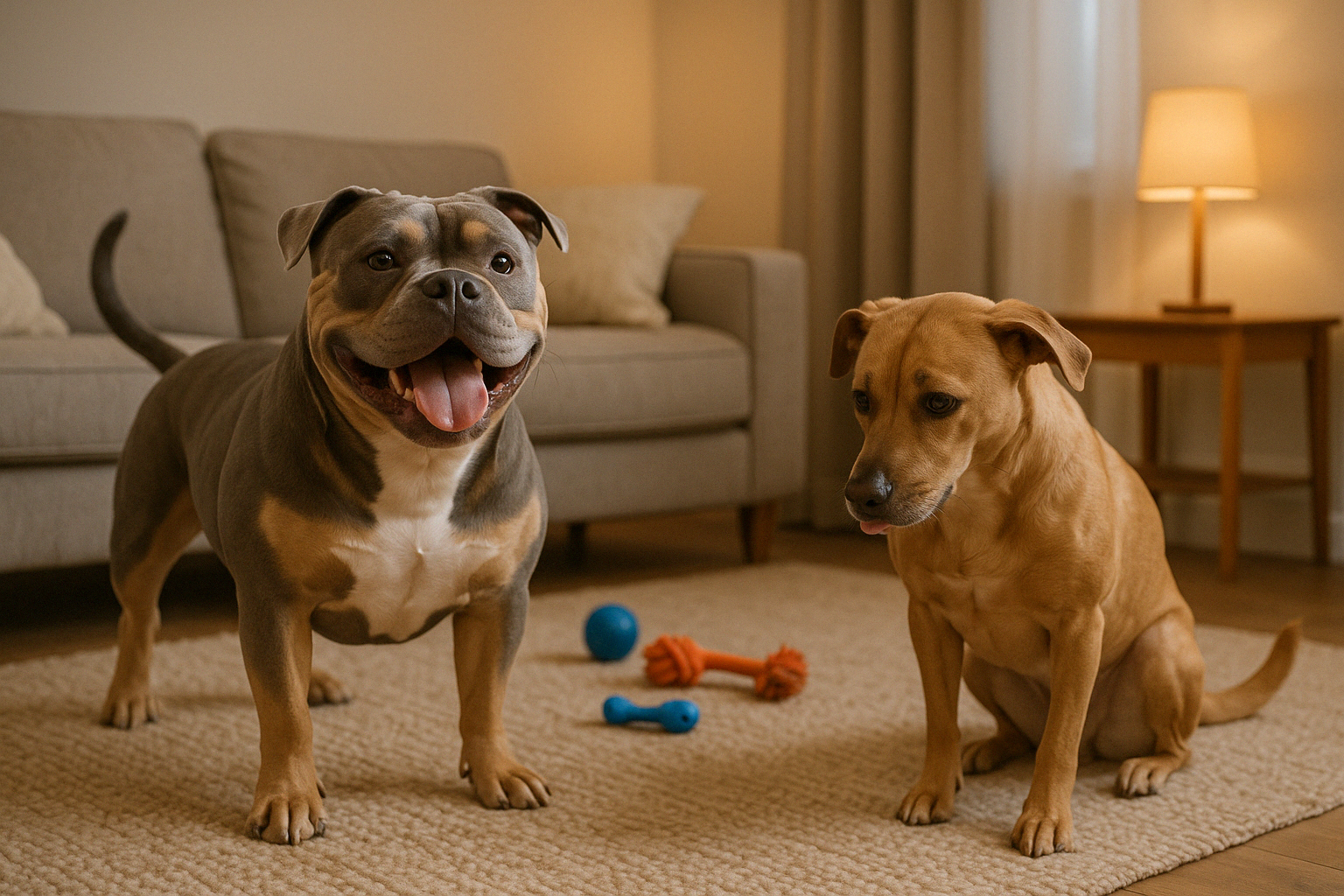Dogs may not speak our language, mas they’re always communicating. Through body posture, tail movement, ear position, and facial expressions, your dog is giving you clear clues about how they feel. The more you understand their signals, the better your bond, your training, and your dog’s well-being.
In this guide, we’ll break down the most common forms of dog body language — so you can know when your dog is happy, anxious, playful, or stressed.
Why Body Language Matters
Reading your dog’s signals helps you:
- Build stronger trust and communication
- Prevent problems like fear-based aggression
- Recognize discomfort before it escalates
- Create a more responsive training experience
- Deepen emotional understanding
Every dog has its own personality, but most speak a “universal dog language” with their body.
Key Signs Your Dog Is Happy and Relaxed
Look for these signs that your dog is content:
- Loose, wagging tail (medium height, wide sweep)
- Soft eyes (not wide or tense)
- Relaxed mouth (slightly open, tongue visible)
- Wiggly body — from shoulders to tail
- Play bow — front legs down, rear up, tail wagging
These are all signs of comfort, playfulness, and connection.
Signs Your Dog Is Anxious or Uncomfortable
Dogs often show discomfort long before they bark or growl:
- Ears pinned back
- Tense body or stiff tail
- Licking lips or yawning (outside of tiredness)
- Whale eye — whites of eyes showing
- Avoiding eye contact or turning away
- Panting when not hot
- Tail tucked between legs
These signs mean your dog is unsure, nervous, or wants space.
Signs of Fear or Stress
When fear increases, so do the signals:
- Shaking or trembling
- Pacing or trying to escape
- Hiding behind furniture or people
- Growling or freezing
- Flattened body posture
- Avoiding being touched
It’s important to give space and offer comfort or distance from the trigger.
Signs of Aggression or Defensiveness
Aggressive signals are often a last resort when earlier signals were missed:
- Stiff, forward body posture
- Direct, hard eye contact
- Tail held high and stiff
- Raised hackles (hair along the back)
- Growling, snapping, or showing teeth
These are warning signs — don’t punish, but remove your dog from the situation and reassess. Most aggression stems from fear or overstimulation.
Calming Signals – When Dogs Try to De-Escalate
Dogs often try to avoid conflict with subtle cues known as “calming signals”:
- Turning head away
- Sniffing the ground
- Slow blinking
- Walking in a curve rather than direct approach
- Sitting or lying down to show submission
Recognizing these helps you respond gently and respectfully.
Understanding Tail Position
Dogs “speak” with their tails:
- Mid-height, wagging widely – happy
- Low and wagging slowly – unsure or submissive
- Tucked under body – afraid
- High and stiff – alert or potentially aggressive
- Still tail – unsure, about to decide what to do
Tail type matters too: some breeds have curled or naturally upright tails — know what’s “neutral” for your dog.
Ears and Eyes – The Subtle Indicators
Pay attention to:
- Ears forward – curious or alert
- Ears flat or back – submissive, scared, or uncomfortable
- Dilated pupils – stress or excitement
- Soft blinking – calm and trusting
- Whale eye – stressed or fearful
Combine these signals with other cues for a full picture.
What About Growling?
Growling is not bad — it’s communication.
It means:
“I’m uncomfortable. Please back off.”
Don’t punish growling — instead, identify the trigger and give your dog space. A punished growl may turn into a bite without warning next time.
Tips to Improve Communication With Your Dog
- Observe your dog in different situations
- Learn their “normal” posture so you notice changes
- Respect signs of discomfort
- Use calm tones and slow movements
- Never force interaction with other dogs or people
- Give choices — let your dog walk away when needed
The more your dog sees that you listen, the more they’ll trust you.
Final Thoughts
Understanding dog body language is like learning a new language — and your dog is the best teacher. With patience, observation, and empathy, you’ll become fluent in what they’re feeling and thinking.
The result? A better bond, clearer training, and a more peaceful life together — where your dog feels seen, heard, and safe.

